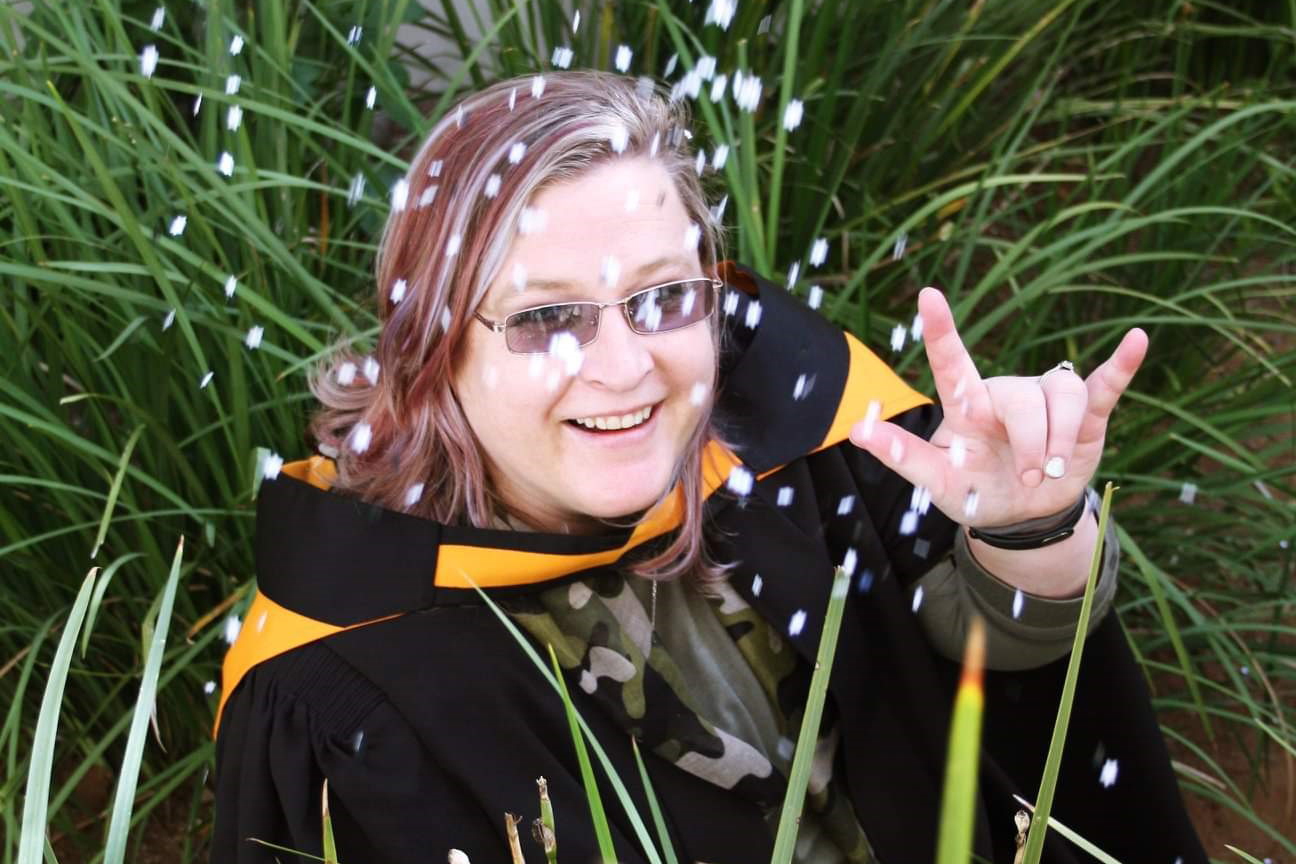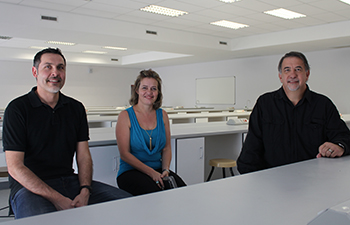Latest News Archive
Please select Category, Year, and then Month to display items
22 September 2021
|
Story Michelle Nöthling
|
Photo Supplied
 Annemarie Le Roux.
Annemarie Le Roux.
“I love working with children.” This is one of the first things Annemarie le Roux mentions when asked to describe herself. This love for children propelled Annemarie into the field of education and she graduated in 2006 with a BEd in Foundation Phase at the UFS. Annemarie immediately immersed herself in the Deaf community, enriching the lives of children at the Thiboloha School for the Deaf in Qwaqwa and the De la Bat School for the Deaf in Worcester.
The academic world enticed Annemarie back to the University of the Free State (UFS) and she was appointed as a junior lecturer in the Department of South African Sign Language (SASL) and Deaf Studies in 2013. Going from strength to strength, Annemarie completed her master’s degree in SASL in 2019, and published an
article earlier this year that she co-wrote with Marga Stander. In this article, they found that SASL “has become an increasingly popular language that hearing university students want to learn as a second language” and subsequently explored different teaching methods used for this emerging group of interested students.
Although now firmly established in academia, Annemarie is still committed to the practical application of SASL. “I am closely involved in student and community engagement through the
SIGNALS Sign Language student association that helps empower the Deaf community and South African Sign Language.” She also interprets for the Deaf community whenever she gets an opportunity, as well as for Deaf students in class and meetings.
On the importance of Sign Language and the recognition of the Deaf community in South Africa, Annemarie believes it will open greater opportunities for development. “More people will be able to learn SASL, and it might even become a subject in school for hearing children.”
Oxford professor unlocks secrets of DNA
2017-03-31

From left are: Dr Cristian Capelli, Associate Professor
of Human Evolution at Oxford University;
Dr Karen Ehlers, Senior Lecturer and Prof Paul Grobler,
both from the Department of Genetics at the UFS.
Photo: Siobhan Canavan
Many people are interested to know more about their history and origins, and with the help of genetics, it is possible to provide more information about one’s roots.
During a lecture at the Department of Genetics at the University of the Free State (UFS), Dr Cristian Capelli, Associate Professor of Human Evolution at Oxford University in the UK, addressed staff members and students on the history of our species.
Reconstructing the history of human population
With his research, titled: People on the move: population structure and gene-flow in Southern Africa, Dr Capelli looks at reconstructing the history of human populations, focusing mainly on how the different human populations are related, as well as how they exchange genes.
He said this research could be of great significance to the medical field too. “Knowing what the genetic make-up of individuals is, can give us some information about their susceptibility to diseases, or how they would react to a given medicine. Therefore, this knowledge can be used to inform health-related policies.”
Combining individual histories of multiple people
To understand this research more clearly, Dr Capelli explained it in terms of DNA and how every individual receives half of their DNA from their mother and half from their father just as their parents had received theirs from their parents. And so it goes from generation after generation. Each individual stores a part of their ancestors’ DNA which makes up the individual genetic history of each person.
“If we combine these individual histories by looking at the DNA of multiple people, we can identify the occurrences that are shared across individuals and therefore reconstruct the history of a population, and in the same way on a larger scale, the history of our own species, homo sapiens.